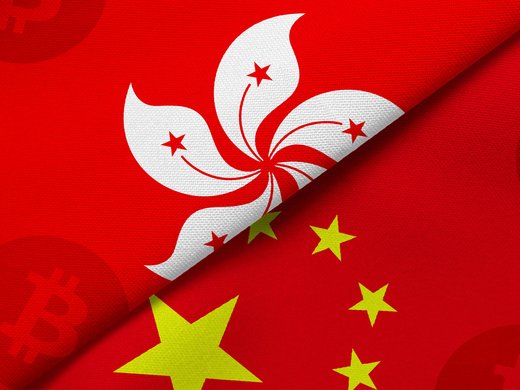Crises are transformative. Over the past 20 years, the global reach of successive financial crises has prompted a frenzy of international standard setting, producing a complex dynamic between state-level regulation and international norms, and between hard and soft law. Capital markets, given their role as transmitters of financial distress internationally, have been caught in this dynamic.
Crisis pushed capital markets regulation out of its penumbra of technicality and into the international limelight, leading to the redeployment of an existing international organization, the International Organization of Securities Commissions (IOSCO). As the crisis response subsides, multiple issues associated with this dynamic have surfaced and merit examination:
- the implications of new roles thrust upon IOSCO;
- the mechanics of international standard setting; and
- the implementation of international standards and possible alternatives.
New Roles for IOSCO
During the three and a half decades of its existence, IOSCO has been a focal point for the international oversight of capital markets. IOSCO, however, is neither a regulator nor a treaty organization. It is a network of national regulators, market institutions and international financial organizations. In the beginning, IOSCO served as a venue for primarily informal cooperation and coordination among its members.
In 1998, during the aftermath of the Asian financial crisis and at the behest of emerging markets, IOSCO embarked on a new mission — international standard setting. This focus led to the publication of the Objectives and Principles of Securities Regulation; dozens of other sets of principles, standards and guidelines followed.
Currently, IOSCO self-identifies as a “global standard setter.” Building on that function, IOSCO has followed a trajectory set by a now defunct European Union body, the Committee of European Securities Regulators (CESR), in adopting a CESR-like role of “quasi-regulator.” Unlike CESR, however, IOSCO does not operate within a treaty framework supported by associated judicial, legislative and executive institutions. More importantly, the quasi-regulatory initiatives of IOSCO set it on a collision course with powerful state regulators. In pursuing its new roles in an environment of increasing regulatory divergence, IOSCO risks undermining its original mission of coordination and cooperation.
Mechanics of International Standard Setting
The IOSCO Objectives and Principles of Securities Regulation was released in September 1998, along with the International Disclosure Standards for Cross-Border Offerings and Initial Listings by Foreign Issuers. Together, they set the pattern for later efforts. Created at a time of United States hegemony, these standards subsume the hidden and rarely articulated assumptions of US regulation, particularly the seminal Securities Act of 1933.
Convergence was the goal. The objective was to establish international principles — based on the gold standard of US regulation — that represented best practice and could be emulated globally. This promoted integrated, efficient capital markets and was an appealing, if simplistic, notion.
Over time, other influences came into play. For example, the United Kingdom’s predilection for voluntary codes of conduct in the financial sector was easily projected into the international arena. Internationally, voluntary codes filled a vacuum left by the absence of supranational regulators. Also, with the creation of the European Securities and Markets Authority (ESMA) in 2011, the European Union began flexing its regulatory muscle, often preferring hard law to soft. In the process, the European Union also influenced international standard setting. The different balancing of private and public interests and relative indifference to disclosure-based approaches in the European Union inevitably put these influences at odds with US regulation.
The form and content of international standards now vary widely. To the extent that standards exhibit technical granularity (as opposed to airy vagueness), they risk generating frictions with, and possible rejection by, state regulators. The motivations behind the creation of new standards vary too, in sometimes unexpected ways. Where state regulatory initiatives fail to be adopted domestically due to political or industry opposition, proponents may push for their expression in international standards. Pressure then mounts to align domestic law with the new international standards.
The stated goals of IOSCO standard setting are also changing, particularly in the face of massive waves of re-regulation. Harmonization and consensus are proving more elusive. IOSCO acknowledged in 2010 that the structure and specific provisions of regulatory programs may differ. By 2015, IOSCO was including disclaimers to the effect that participation by members in standard-setting efforts was not indicative of future regulatory action on their part. As international standards have proliferated, so has their influence dissipated.
Implementation and Alternatives
IOSCO is not the only international standard setter in the capital markets. The International Accounting Standards Board comes to mind. IOSCO, however, rose to prominence through the International Monetary Fund (IMF)/World Bank Financial Sector Assessment Program (FSAP). Over one hundred jurisdictions participated in the FSAP process.
The FSAP process employed international standards, such as the IOSCO Objectives and Principles, as diagnostic and prophylactic tools, on a state-by-state basis. However, the 12 sets of existing standards pulled together in 1999 for this purpose were a “collection of convenience” — duplicative, overlapping and even contradictory. Some standards (such as the IOSCO Objectives and Principles) were brand new and completely untested. Nevertheless, in the hands of two powerful international institutions, all the standards were given equal legitimacy and widely disseminated.
But the IOSCO Objectives and Principles had not been designed for use in the FSAP process. In fact, voices within IOSCO objected to their somewhat peremptory appropriation. Nevertheless, the FSAP machinery rolled inexorably onward, sweeping IOSCO and its standards along.
Remarkably, compliance with and adoption of these standards, irrespective of their suitability for local circumstances, is high. For one thing, the IMF and the World Bank produce public score cards. IOSCO itself conducts assessment and compliance reviews at the instigation of the Group of Twenty or the Financial Stability Board. Emerging economies use compliance to signal their readiness to participate in international markets. Developed economies such as Canada can show leadership and support for the “internationalist” cause.
There are problems, however. Aging international standards may not keep pace with market change — and may not have been appropriate from the start. Dissatisfaction with domestic implementation may arise. IOSCO’s “quasi-regulatory” posturing may result in standards taking on a regulatory texture at odds with state-level initiatives. Shifting regulatory paradigms may create dissonance with existing standards. Inadequacies in the standards may prompt a return to unilateralism or bilateralism in regulatory efforts. Coerciveness in the implementation of standards may undermine their acceptance and legitimacy.
All of which raises an unanswered question: are there better alternatives to IOSCO standard setting?
Prospects for the Future
Simplistic belief in the inevitability of regulatory convergence has passed. The world is too complex a place, markets are too diverse and change is too rapid. There is no one hegemonic power. Commercial and political rivalries continue to play out in the international arena, leaving many economies as bystanders. National push-back against international standards may be indicative of other, deeper political convictions. IOSCO itself now defers to the primacy of state regulation. The increasing “granularity” of international standards may create regulatory dissonance. Regulators and courts may need to fall back on older techniques associated with conflict ordering rather than rely on harmonization efforts. These developments may not mark the end of internationalism, but they certainly indicate a new internationalism.



